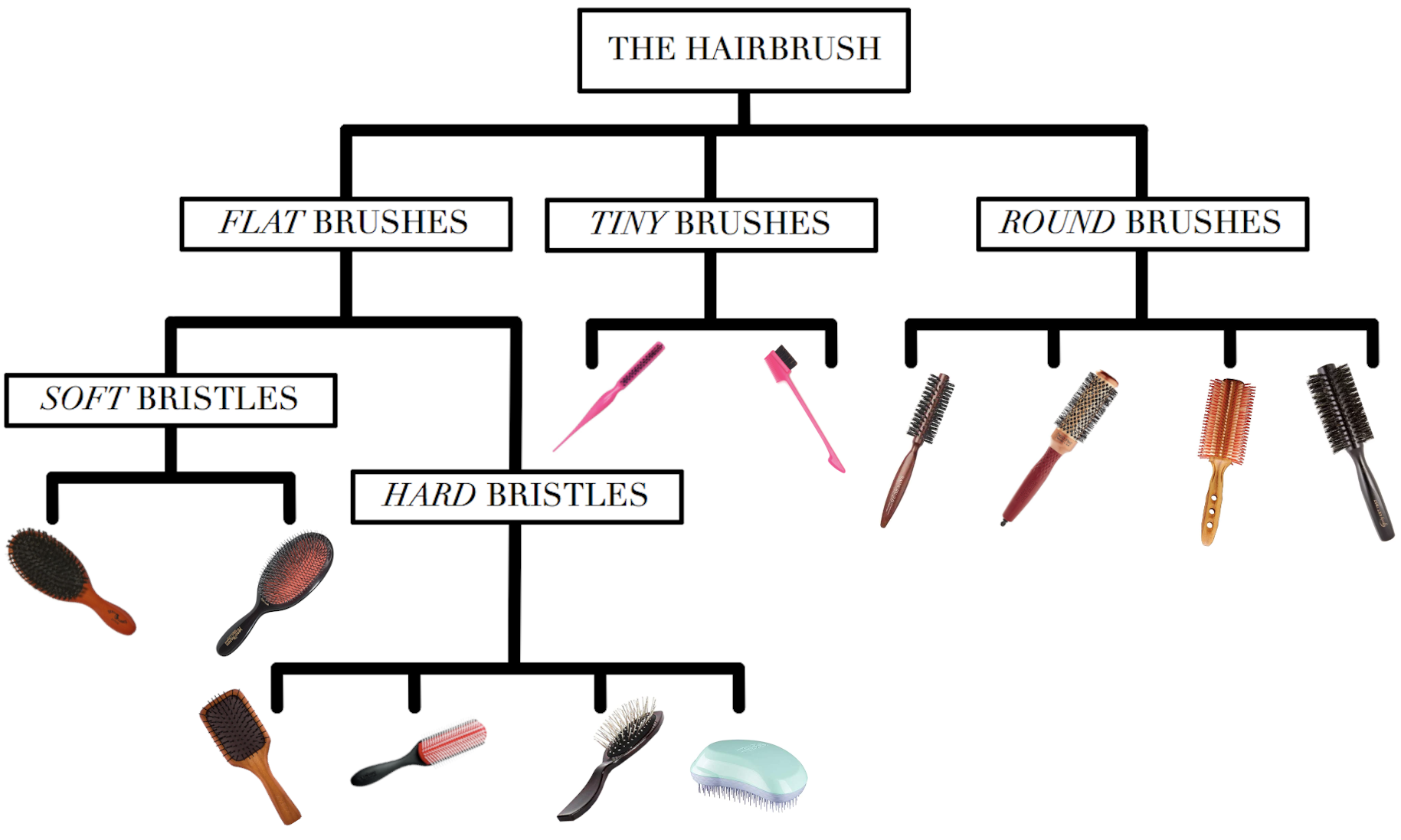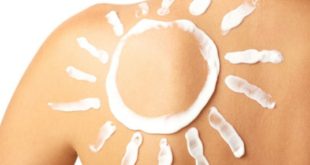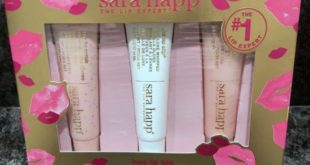In the beginning, there was “hairbrush”: one piece of wood with some animal hairs poked and looped through the top. A marvel! A wonder! But as time progressed, suddenly it became survival of the fittest—only the hairbrushes that could adapt to our ever specalizing needs lived on to brush another day. So the spawn of that one, lowly hairbrush began to look a little different, and choosing a hairbrush got much more complicated.
Luckily hairbrush taxonomists hairstylists like Elisabeth Leary, founder of Brooklyn’s Whiteroom Salon, have kept a good record of the species’ development over the years. “It’s important to use a brush that is appropriate for your texture, length, and desired result when styling your hair,” says Leary. In other words, the right brush might change your life, and if you’re not getting the results you want with the one you have, you should take that as a sign that you need to switch up. So, which brush is right for you? Let’s unpack 12 of the most popular types.

Boar Bristle Brush: “A boar brush can smooth thick hair, detangle fine hair, and add shine to coarse hair,” says Leary. It has soft, dense, natural bristles to help distribute oil from your scalp (where you don’t want it) to your ends (where you do). You can use it on dry hair, or on wet hair for a “soft, natural blow dry with lots of shine.”
Mixed Bristle Brush: If your hair is thick, coarse, wavy, or long and you’re looking to make it smooth and shiny, the mixed bristle brush is your guy. “They have a combination of short natural and long nylon bristles packed closely together,” says Leary. It’s her favorite for a slick ponytail and an easy, smooth blowout. “Move the hair back and forth away from the scalp, then pull taught away from the head for a sleek finish.”
Paddle Brush: “For longer, thicker hair types, you’d use a paddle brush just to brush your hair,” says Leary. The bristles are short and stiff, capped by a small bead to make sure the hard plastic doesn’t scrape your scalp. “You can gtab large amounts of hair with this brush as you blow dry for tension, but it won’t give you much control or volume for styling.”
Cushion Brush: Also called a Denman brush (it’s the brand that made them famous), the cushion brush has long, hard bristles. Leary recommends it for two styles. “To get that really sleek Anna Wintour bob, it will help you grab and round the ends while smoothing the roots and midsections.” Or, on curly hair, brush damp strands in 2-inch sections for bigger, softer air-dried curls.
Wig Brush: Wigs and extensions are more fragile than the hair that grows out of your head, and this brush with super thin metal bristles is gentle enough to groom them safely. Of course, you can also use it to gently detangle when you’re not in the shower, or comb through fresh curls to break them up.
Detangling Brush: “To brush out tangles with little to no pain, as fast as possible, you’d use a detangling brush on wet hair with a little leave-in conditioner,” says Leary. The bristles are made of plastic and extremely flexible, so they don’t tear straight through tangles. And, because it’s virtually pain-free, it’s great for when your scalp is particularly tender.
Teasing Brush: A teasing brush has long, natural bristles that grab on to hair really well. “This brush is used for teasing the hair when you want to create a lot of volume,” explains Leary. “Think bumps, bouffants, and French twists.” You can use it on any hair type as long as you’re aiming for volume—a teasing brush is just used for backcombing, and not for all-over smoothing.
Edge Brush: Your toothbrush’s long lost cousin, an edge brush is made of short boar bristles packed densley together. They’re best used by those with extremely tight curls around the hairline. “You can either use it to creat tension and smooth the short, curly hairs with a blowdryer,” says Leary, “or use it to style them when your hair is already dry.”
Small Round Brush: The littlest of round brushes is reserved for those with short or very fine hair. “For shorter styles, a regular round brush would be too big to create volume at the root,” explains Leary. On fine hair, it helps achieve body that doesn’t immediately fall. Leary’s advice? “Wrap the hair around the body, put it under the dryer, and twist.”
Thermal Round Brush: A thermal round brush absorbs some of the heat from your blowdryer, sort of turning the brush into a curling wand. “It’s best for those with fine or long hair when you want a lot of volume at the root and some wave, bend, and body,” says Leary.
Mixed Round Brush: A mixed round brush probably has a combination of short, natural bristles and longer synthetic ones. It’s usable on nearly any hair texture that’s not cut short, for when you want that satisfying blowout bounce from roots to ends. “The tightly packed bristles offer shine and a good amount of bend when used with a blowdryer,” adds Leary.
Boar Round Brush: You’ll get lots of shine and softness, and because it helps distribute your hair’s natural oils, a boar round brush and a blowdry makes a great day two refresher. It’s like your classic blowout got put through a hazy, fluffy filter—your most romantic hair awaits.
—Ali Oshinsky
Photo via ITG



